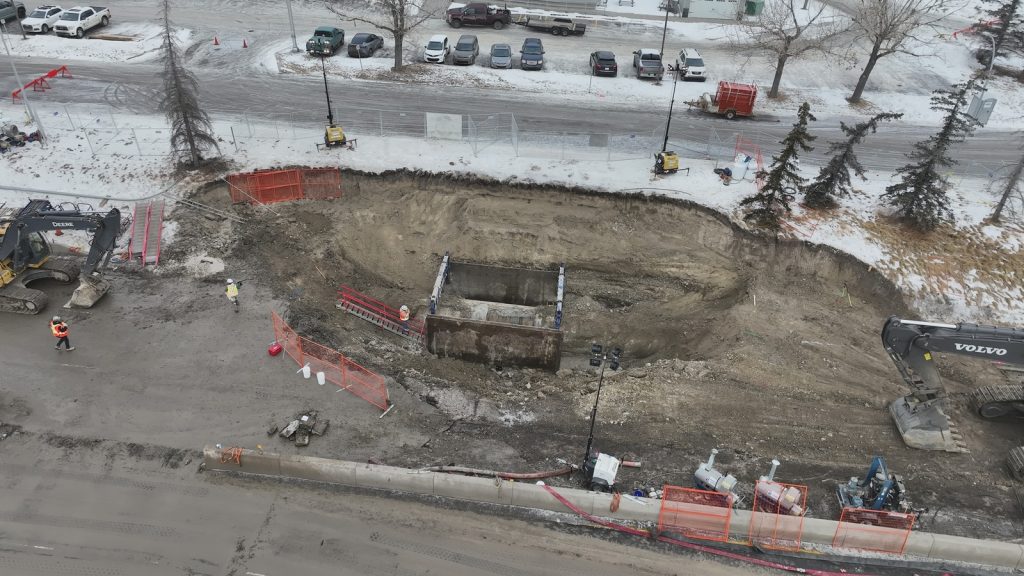Backers of Calgary-Banff train say they need Parks Canada to get on board

Posted Jun 27, 2022 2:42 pm.
Last Updated Jun 27, 2022 2:43 pm.
Updated ridership projections show a proposed $1.5-billion Calgary-to-Banff passenger train could be a success without annual payments from the government of Alberta, the project’s backers said Monday.
But Liricon Capital Inc., the lead private sector proponent of the project, said that will only happen if Parks Canada enacts policies aimed at encouraging the adoption of mass transit by visitors to Banff National Park.
“Specifically, the help we asked for and need from them (Parks Canada), is to provide some carrots and sticks,” Liricon Capital managing partner Jan Waterous said, adding that could be anything from raising the entry fee to Banff National Park for private passenger vehicles to expanding bus and shuttle service between park attractions.
In an interview, Waterous said the company is still waiting for a yes or no from the provincial government for its proposed rail line.
Liricon submitted its unsolicited proposal to the province earlier this year. While the company did not request any government funding for the project’s capital costs it did ask the province to commit to providing up to $30 million annually for the life of the train to help cover the mortgage on the project.
However, Waterous, who, together with husband Adam owns the Mount Norquay ski resort located in Banff National Park as well as the long-term lease on the Banff train station, said Monday a new ridership study commissioned by Liricon and Plenary shows those payments may not even be necessary.
The study, conducted by international transportation consultancy Steer, concluded that the train could carry up to 11 million passengers per year by 2035, five times more than originally projected in Liricon’s first proposal.
The new ridership projections are based on recent developments, Waterous said, such as Liricon’s securing the support of local municipalities including Calgary, Canmore and Cochrane, all of which have committed to tying in the passenger rail line to their existing mass transit networks.
The higher ridership forecasts also reflect Liricon’s discussions with local tourism operators who have expressed interest in offering package deals for rail travellers, as well as ongoing talks with Air Canada and WestJet that could see the rail line integrated with the airlines’ schedules to offer travellers a seamless transfer from the Calgary International Airport to Banff.
READ MORE:
-
Banff open for skiing, snowboarding over Canada Day long weekend
-
Backers of Banff/Calgary passenger rail project say they need provincial yes or no
However, Waterous said the higher ridership figures are also based on the assumption that Parks Canada will incentivize ridership of the train through policy changes, something the federal agency has not committed to.
“We have done as much as we can do. The success of the train at this point really comes down to stakeholder support, and specifically the support of Parks Canada to put these policies in place to support this shift to mass transit,” Waterous said.
Liricon’s plan involves a European-style tourist train that would also serve local commuters, with service through seven communities as well as a stop in downtown Calgary.
The proposed hydrogen-powered passenger train would be built within the existing Canadian Pacific Railway Ltd. freight corridor, which means it would require the twinning of the existing track but would not involve any foray into currently undisturbed land within Banff National Park.
Supporters of the project say the train could reduce the number of passenger vehicles within Canada’s oldest national park by at least 20 per cent, and up to 40 per cent with the use of policy incentives to promote train usage.
While proponents say that would reduce greenhouse gas emissions in the park, as well as traffic congestion, some environmentalists have warned that a passenger train would make Banff an even more popular destination for tourists, increasing the overall human impact on wildlife and the region’s natural landscape.
Waterous said Liricon’s next step is to work with Steer to develop an investment grade ridership and revenue study that will fully flesh out the financial impact of potential policy incentives.
Liricon has suggested that net ticket costs for Albertans using the train would be priced at about $20, with out-of-province users paying more.
Liricon has asked the province to commit up to $10 million to complete the next phase of design and development work.








